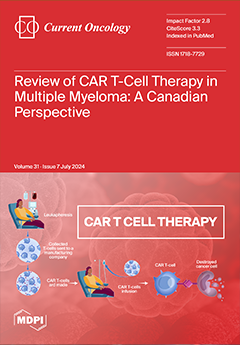Introduction: This study aimed to evaluate the added diagnostic value of systematic biopsies (SBx) after magnetic resonance imaging (MRI)-targeted biopsies (TBx) and the presence of prostate cancer (PCa) outside MRI targets, in a prospective, contemporary, multicentric series of fusion biopsy patients.
Methods
[...] Read more.
Introduction: This study aimed to evaluate the added diagnostic value of systematic biopsies (SBx) after magnetic resonance imaging (MRI)-targeted biopsies (TBx) and the presence of prostate cancer (PCa) outside MRI targets, in a prospective, contemporary, multicentric series of fusion biopsy patients.
Methods: We collected data on 962 consecutive patients who underwent fusion biopsy between 2022 and 2024. Prostate cancer was considered clinically significant (csPCa) in the case of grade ≥ 2. Median test and Fisher exact chi-square tests were used. To identify predictors of out-field positivity, univariate and multivariable logistic regression analyses were performed.
Results: Prostate cancer and csPCa were detected by TBx only in 56% and 50%, respectively, and by SBx only in 55% and 45%, respectively (
p < 0.001). Prostate cancer and csPCa were diagnosed by TBx in 100 (10%) and 82 (8%) SBx-negative cases and by SBx in 86 (9%) and 54 (6%) TBx-negative cases (
p < 0.001). Tumors outside MRI targets were found in 213 (33%) cases in the same lobe and 208 (32%) in the contralateral lobe, most of them being csPCa. Predictors of out-field contralateral PCa were positive DRE (HR 1.50,
p 0.03), PSA density ≥ 0.15 (HR 2.20,
p < 0.001), and PI-RADS score 5 (HR 2.04,
p 0.01).
Conclusions: Both TBx and SBx identify a non-negligible proportion of csPCa when the other modality is negative. SBx after TBx should always be considered given the risk of missing other csPCa foci within the prostate, especially in patients with positive DRE, PSA density ≥ 0.15, and PIRADS 5 lesions.
Full article






